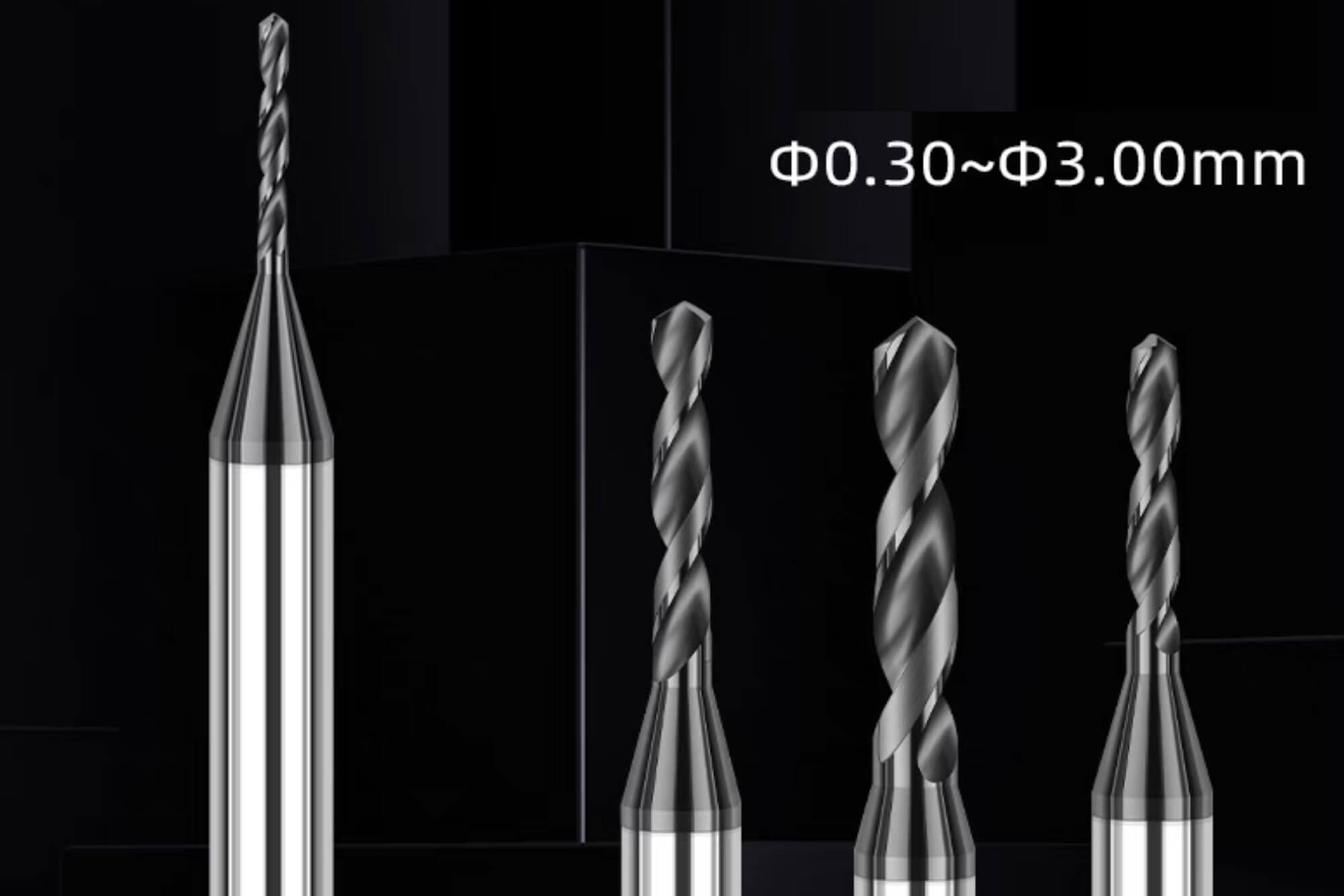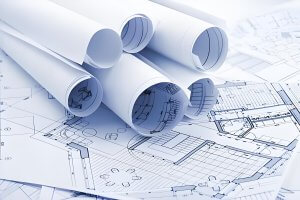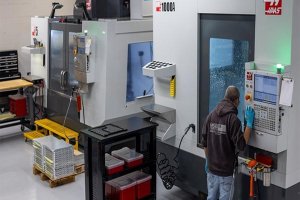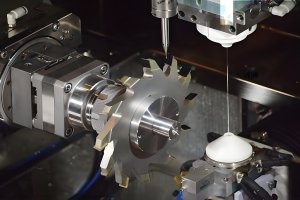Introduction
When I started working with CNC machines, I quickly learned the importance of having a reliable drill bit size chart at my workstation. CNC machining is all about precision. Even a tiny mistake, like selecting the wrong drill bit size, can result in wasted materials, extra costs, or worst-case scenario—ruined parts.
So, why is a drill bit size chart essential for CNC machining, especially CNC drilling? Simple: accuracy matters. Whether you’re drilling precise holes for assembly, threading, or clearance, the drill bit size you choose directly impacts the success of your entire operation. I’ve personally seen costly projects go sideways just because someone misread a drill bit size.
In this guide, I’ll share the complete drill bit size charts (both metric and imperial) that I’ve collected and frequently use myself. I’ll also give you some practical tips from my own experiences on how to select and use drill bits effectively in your CNC operations.
Drill Bit Basics
Let’s cover the basics first. Understanding drill bit sizes starts with knowing exactly what we’re measuring and how.
Drill Bit Diameter, Flute Length, and Shank Diameter
The drill bit size typically refers to its diameter—the width of the hole it will create. Flute length refers to the length of the spiral grooves along the drill bit, which evacuates chips during drilling. The shank diameter is the thickness of the part of the drill bit that’s secured in the chuck or collet of your CNC machine.
I learned the hard way how crucial it is to check not only the drill bit size but also shank diameter compatibility with my machine’s tool holder.
Metric vs. Imperial Drill Bit Sizes
There are two main standards for drill bit sizing:
- Metric: Measured in millimeters (mm). Commonly used internationally.
- Imperial (inch-based): Commonly used in the United States. Includes fractional inch sizes, number sizes, and letter sizes.
When I first started machining, I frequently found myself converting between metric and imperial sizes. For quick conversions, a chart became invaluable at my workbench.
Common Drill Bit Types in CNC Machining
Here are the most common drill bits I’ve used regularly:
| Drill Bit Type | Description | Typical Usage in CNC |
|---|---|---|
| Twist Drill | Standard drill bit with spiral flutes | General purpose holes |
| Center Drill | Short, stiff drill bit | Creating accurate starting holes |
| Spot Drill | Short, rigid drill bit | Precisely marking drill positions |
| Step Drill | Drill with stepped sizes | Sheet metal, enlarging existing holes |
| Carbide Drill | Hard material drill bit | High-speed CNC machining |
| Parabolic Drill | Drill with special flute design | Deep holes, efficient chip removal |
In my experience, knowing exactly which drill bit type suits the job saves time and money. For instance, initially, I often tried using a twist drill for precise hole positioning without spotting first. The result? Drill bit walking, wasted material, and frustration.
Complete Drill Bit Size Charts
Throughout my CNC machining career, having a clear, easy-to-read drill bit size chart has consistently saved me time. Below are my most trusted charts, split clearly into Metric and Imperial sizes. I encourage you to bookmark this page or print out these tables—I certainly did—and keep them handy near your CNC machine.
Metric Drill Bit Size Chart
Metric drill bits are measured in millimeters (mm). They’re popular globally and often required for precision machining tasks. Here’s a quick-reference metric drill bit size chart:
| Drill Bit Size (mm) | Decimal Equivalent (inches) | Recommended Hole Type |
|---|---|---|
| 1.0 | 0.0394 | Pilot, fine precision holes |
| 1.5 | 0.0591 | Small hardware fitting |
| 2.0 | 0.0787 | Thread tapping (small screws) |
| 2.5 | 0.0984 | Thread preparation, electronic boards |
| 3.0 | 0.1181 | General mechanical fittings |
| 3.5 | 0.1378 | Tapping M4 thread |
| 4.0 | 0.1575 | Clearance holes, rivets, bolts |
| 5.0 | 0.1969 | Standard clearance hole, M6 tapping |
| 6.0 | 0.2362 | General purpose bolt clearance |
| 8.0 | 0.3150 | Heavy-duty hardware attachment |
| 10.0 | 0.3937 | Structural fittings |
| 12.0 | 0.4724 | Anchor bolts, large structural work |
From my personal experience, having precise metric measurements in the workshop removes any guesswork and significantly improves accuracy—especially in critical CNC tasks such as tapping threads or fitting precision components.
Imperial (Inch) Drill Bit Size Chart
Imperial drill bits are most common in the United States. The sizes include fractional, numbered, and lettered drill bits. I often need to reference these when working on U.S.-based projects or legacy components.
Fractional Drill Bit Sizes (Inches)
| Drill Bit Size (Fraction) | Decimal Equivalent | Typical CNC Usage |
|---|---|---|
| 1/64 | 0.0156 | Micro-drilling, precision work |
| 1/32 | 0.0313 | Precision, electronics |
| 1/16 | 0.0625 | Pilot holes, small screws |
| 3/32 | 0.0938 | Thread tapping preparation |
| 1/8 | 0.1250 | Standard general-purpose hole |
| 3/16 | 0.1875 | Bolt clearance holes |
| 1/4 | 0.2500 | Common CNC bolt clearance |
| 5/16 | 0.3125 | Larger bolt clearance |
| 3/8 | 0.3750 | General hardware attachment |
| 7/16 | 0.4375 | Structural fittings, anchor bolts |
| 1/2 | 0.5000 | Large structural work, heavy bolts |
I remember a project where I mistakenly used a 3/16″ drill bit instead of 1/4″. This simple oversight required me to redrill dozens of holes, costing valuable time. Having these charts at hand now prevents such costly mistakes.
Numbered Drill Bit Sizes (#1 – #10)
These smaller-sized bits are often used in precision machining and electronics applications.
| Number Size | Decimal Size (inches) | Common CNC Usage |
|---|---|---|
| #1 | 0.2280 | Precision holes, small fittings |
| #2 | 0.2210 | Electronics, fine tapping |
| #3 | 0.2130 | Thread prep for fine screws |
| #4 | 0.2090 | Precision CNC machining |
| #5 | 0.2055 | Detailed metal parts |
| #6 | 0.2040 | Electronics, precision mechanics |
| #7 | 0.2010 | Perfect tapping hole for 1/4″-20 |
| #8 | 0.1990 | Small thread tapping |
| #9 | 0.1960 | Precision components |
| #10 | 0.1935 | Thread tapping, electronic enclosures |
Lettered Drill Bit Sizes (A-F)
Letter sizes are specialized, often used for fine adjustments:
| Letter Size | Decimal Size (inches) | CNC Application |
|---|---|---|
| A | 0.2340 | Precision assembly, tapping preparation |
| B | 0.2380 | Fine fittings, electronic devices |
| C | 0.2420 | High-precision CNC drilling |
| D | 0.2460 | Thread tapping intermediate sizes |
| E | 0.2500 | Precision CNC metalwork |
| F | 0.2570 | Small precision clearance holes |
These letter-sized drill bits were tricky for me initially because of their uncommon sizing. Now, they’re indispensable for precise fits and tolerances in detailed CNC projects.
Metric-Imperial Conversion Quick Reference
When switching between international and U.S. standards, quick conversions save time. Here’s my go-to quick conversion chart:
| Metric (mm) | Imperial (inch) |
|---|---|
| 1.0 mm | 0.0394 in |
| 2.0 mm | 0.0787 in |
| 3.0 mm | 0.1181 in |
| 4.0 mm | 0.1575 in |
| 5.0 mm | 0.1969 in |
| 6.0 mm | 0.2362 in |
| 8.0 mm | 0.3150 in |
| 10.0 mm | 0.3937 in |
In my daily workflow, having quick access to this conversion table ensures accuracy, especially when working with international blueprints or drawings.
CNC Drill Bit Selection Guide
Selecting the right drill bit size is critical, but choosing the right type of drill bit and corresponding parameters is equally important. Over the years, I’ve learned firsthand how drill bit selection can dramatically influence machining quality, productivity, and overall project success. Here’s my detailed guide to help you select drill bits for your CNC operations.
Matching Drill Bit Size to Hole Requirements
Every CNC job has unique requirements. Your hole’s intended purpose determines the exact drill bit size you’ll need. Here’s a quick summary from my own experience:
- Pilot Holes: Use a smaller drill bit size (usually 2-3mm or 1/16″-1/8″) to precisely position larger holes.
- Clearance Holes: Slightly larger drill bit size than bolt diameter (e.g., 5.2mm drill bit size for an M5 bolt).
- Tapped Holes: Choose a drill bit size slightly smaller than your tap size to ensure adequate thread engagement (e.g., a #7 drill bit for a 1/4″-20 tap).
Let’s explore these practical rules further.
Drill Bit Size Recommendations for Threaded Holes
Selecting the correct drill bit size for tapping is crucial. Below is a table I’ve relied on repeatedly:
| Thread Size | Drill Bit Size (Imperial) | Drill Bit Size (Metric) |
|---|---|---|
| M3 x 0.5 | – | 2.5mm |
| M4 x 0.7 | – | 3.3mm |
| M5 x 0.8 | – | 4.2mm |
| M6 x 1.0 | – | 5.0mm |
| 4-40 UNC | #43 (0.0890″) | 2.26mm |
| 6-32 UNC | #36 (0.1065″) | 2.70mm |
| 8-32 UNC | #29 (0.1360″) | 3.45mm |
| 1/4″-20 UNC | #7 (0.2010″) | 5.10mm |
Using the correct drill bit size ensures threads are durable and strong. Early in my CNC career, I underestimated this and stripped threads repeatedly—costly mistakes that taught me the value of precision.
Drill Bit Selection by Material
Different materials require distinct drill bit sizes and types. Here are my guidelines for common materials:
Aluminum
- Preferred Drill Bit: HSS or Carbide, polished flutes
- Recommended Drill Bit Size Tolerance: ±0.05mm
- Speed and Feed Tips: High RPM, moderate feed rate
Steel (Mild & Stainless)
- Preferred Drill Bit: Carbide, TiN or TiCN coated
- Recommended Drill Bit Size Tolerance: ±0.025mm
- Speed and Feed Tips: Moderate RPM, controlled feed rate
Plastics
- Preferred Drill Bit: HSS, sharp-pointed
- Recommended Drill Bit Size Tolerance: ±0.10mm
- Speed and Feed Tips: Medium to high RPM, careful feed rate to prevent melting
Early on, I once mistakenly used standard drill bits for stainless steel and quickly learned the importance of carbide-coated drills. Selecting the right bit and correct drill bit size dramatically improves tool lifespan and cut quality.
Drill Bit Size and CNC Speeds & Feeds
Using the proper drill bit size also involves understanding appropriate CNC speeds and feeds. Here’s a simplified table I’ve refined over years of machining:
| Drill Bit Size (inches) | RPM (Steel) | RPM (Aluminum) | Feed Rate (IPM) Steel | Feed Rate (IPM) Aluminum |
|---|---|---|---|---|
| 1/8″ (0.1250) | 2500 | 8000 | 5-8 | 10-15 |
| 1/4″ (0.2500) | 1200 | 5000 | 4-6 | 8-12 |
| 3/8″ (0.3750) | 800 | 3500 | 3-5 | 6-10 |
| 1/2″ (0.5000) | 600 | 2500 | 2-4 | 5-8 |
Understanding how drill bit size relates to speed and feed prevented me from countless bit breakages, especially in tougher materials.
Precision Holes vs. Clearance Holes
Precision holes require careful drill bit sizing. For press-fit applications or dowel pins, the drill bit size must be precise to within ±0.01mm. Clearance holes are slightly forgiving, typically allowing ±0.1mm or more. My recommendation:
- Precision: Carbide drills, accurate drill bit sizing, slower feeds.
- Clearance: Standard HSS drills, normal tolerances, moderate speeds.
I recall drilling precision dowel holes with incorrect drill bit sizes early on, which led to loose pins and unusable components—a mistake I never repeated.
Adjustments for Hole Tolerances
If you’re reaming or fine-finishing, start with a drill bit size slightly smaller (0.1mm to 0.2mm undersize) and finish with the reamer. This simple adjustment has consistently improved the accuracy of my CNC machining projects.
Personal Insights from the Shop Floor
I once ran a production of aluminum brackets and chose a drill bit size slightly too large for thread tapping. The threads ended up shallow and weak, forcing me to scrap dozens of parts. Since then, I never compromise on drill bit size accuracy.
Another time, while working with stainless steel, using too small a drill bit size without sufficient lubrication caused overheating, drill bit wear, and eventually breakage. That experience emphasized the importance of drill bit size selection combined with proper machining parameters.
CNC Drilling Practical Tips
Selecting the correct drill bit size is a solid start, but there’s more to CNC drilling success. Over many years working with CNC machinery, I’ve gathered several practical tips to improve drilling accuracy, reduce errors, and save time and costs. Here’s the real-world advice I wish someone had shared with me early on.
Pre-drilling and Pilot Holes
Early in my career, I frequently underestimated pilot holes. I’d think, “Why waste time drilling twice?” But after dealing with drill bits wandering, especially in metal, I realized pre-drilling is essential.
- Pilot hole drill bit size should be significantly smaller (50–60% of your final hole size).
- For example, for a 10mm final hole, choose a 5–6mm drill bit size for your pilot hole.
Using pilot holes nearly eliminated bit wandering and improved overall accuracy.
Peck Drilling vs. Deep Drilling
When I first learned about “peck drilling,” I dismissed it as too slow. After snapping several expensive carbide drill bits deep inside parts, my opinion quickly changed. Peck drilling involves periodically retracting the bit to clear chips.
Here’s when you should use peck drilling based on my experience:
- Hole depth exceeds 3x drill bit size diameter: Start pecking.
- Recommended Peck Depth: Approximately 1–2x drill bit diameter each peck.
- Example: With a 5mm drill bit size, retract every 5–10mm of depth.
Using peck drilling has drastically reduced my bit breakage rates and improved chip evacuation.
Coolant and Lubrication Considerations
Ignoring coolant and lubrication can ruin your drill bit quickly. Early on, I drilled dry, thinking I was saving time. Instead, my drill bits overheated and wore prematurely. Now I recommend:
- Use coolant or cutting fluid for steel and stainless steel.
- Air blast or mist coolant for aluminum, plastics, and composites.
I remember a stainless-steel project where introducing coolant prolonged my drill bit life by nearly 400%.
Preventing Drill Bit Walking or Deflection
Drill bit walking was my nightmare during my first CNC projects. It typically happens when the bit tip deflects off-center, ruining precision holes.
From experience, these simple steps prevent drill bit walking:
- Use center drills or spot drills first, with a small drill bit size of around 2–3mm.
- Ensure drill bit length is minimal: Shorter drill bits deflect less.
- Check spindle runout regularly: Even slight spindle wobble can cause bit deflection.
Conclusion
Throughout my CNC machining journey, the single factor consistently influencing success has been choosing the correct drill bit size. This simple yet crucial choice affects:
- Hole accuracy
- Thread integrity
- Tool lifespan
- Material waste reduction
- Overall project costs
I’ve made plenty of mistakes along the way, such as using incorrect drill bit sizes for tapped holes or skipping pilot drilling. Every error underscored the importance of accuracy and preparation.
My best advice to any CNC machinist, whether beginner or seasoned professional: Never compromise on your drill bit size accuracy. Use trusted charts, double-check your sizes, and keep precision at the forefront of your CNC operations.
FAQ
As someone who has spent years machining parts, I’ve faced nearly every drill bit-related issue you can imagine. Here are straightforward answers to common questions about CNC machining, specifically around Drill Bit Size.
1. What is a drill bit size chart and why do I need it in CNC machining?
A drill bit size chart shows drill bit diameters clearly, often including metric and imperial sizes. It’s essential for accuracy, correct thread tapping, hole precision, and saving material. I always keep a drill bit size chart by my machine.
2. How do I convert between metric and imperial drill bit sizes?
Use a conversion chart or simple formula:
- 1 inch = 25.4 mm
Personally, I recommend having a printed conversion table handy.
3. What’s the most common drill bit size for CNC aluminum drilling?
Typically, 5mm or 6mm drill bit sizes are most common. I frequently use these sizes in CNC aluminum machining for their versatility.
4. How accurate are standard twist drills for CNC precision drilling?
Standard twist drills are accurate within ±0.05mm for general CNC use. For tighter tolerances, reaming after drilling is essential, something I learned through repeated practice.
5. When should I use a center drill before using a twist drill?
Always use a center drill when you require precise hole positioning or when the drill bit size is small (<3mm). Skipping this step cost me accuracy many times early in my career.
6. What drill bit size should I use for tapping threads?
Select a drill bit size slightly smaller than the thread diameter. For example, M5 threads typically require a 4.2mm drill bit. This ensures threads have proper strength—something critical I’ve learned from experience.
7. How can I find the right drill bit size for a press-fit hole?
For press-fit holes, use a drill bit size 0.01–0.05mm smaller than the pin or dowel diameter. Precision here is critical—I once mistakenly drilled slightly larger holes, causing loose fittings.
8. What’s the difference between lettered and numbered drill bits?
Numbered bits (#1–#80) cover smaller sizes used for precision electronics. Lettered bits (A–Z) handle slightly larger, precise intermediate sizes. Both types often feature in specialized CNC jobs I’ve handled.
9. How do I select the correct drill speed and feed for different drill bit sizes?
Smaller drill bits need higher RPM and lower feeds. Larger drill bits require lower RPM and higher feeds. Follow a speed/feed table closely. Ignoring this once led me to break bits repeatedly.
10. How much undersize should a drill bit be compared to the final hole diameter for reaming?
Usually 0.1–0.2mm undersize before reaming. Early on, drilling too close to final size resulted in oversized holes and poor precision.
11. What happens if I choose a drill bit size that’s too large for my CNC application?
You get loose fittings, weak threads, or rejected parts. I once drilled oversized clearance holes for bolts, causing excessive play and ultimately scrap parts.
12. How can I avoid drill bit breakage in CNC drilling?
Choose correct drill bit sizes, appropriate speeds/feeds, use coolant, and employ peck drilling. Early on, ignoring peck drilling caused multiple costly carbide bit breakages.
13. Should I use a step drill or twist drill for thin sheet metal in CNC?
A step drill bit is better for thin metal, providing cleaner holes with less burr. Using twist drills on thin metal resulted in warped sheets and uneven holes in my experience.
14. Why does my CNC drill bit wander during drilling, and how can I prevent it?
Drill bit wander usually results from skipping center drilling, worn bits, or spindle runout. Prevent this by using center drills, ensuring bits are sharp, and regularly checking spindle alignment.
15. How does drill bit coating (like TiN, TiCN) affect drilling performance?
Coatings improve heat resistance, prolonging drill life and increasing speeds. When drilling steel, switching to TiN-coated bits noticeably improved my drill bit lifespan.
16. What is peck drilling and when should it be used?
Peck drilling involves drilling a small depth, retracting to clear chips, and repeating. Always use it for deep holes (3x drill bit diameter or more). Initially, neglecting peck drilling led me to repeatedly lose expensive carbide bits.
17. How do I organize and label different drill bit sizes in a CNC shop?
Use labeled drawers, drill index organizers, or clear bins with sizes marked. I wasted hours looking for bits before adopting a clear labeling system, significantly improving workflow.
18. Are there different drill bit size standards in Europe vs. America for CNC use?
Yes, Europe mainly uses metric drill bit sizes (mm), while America commonly uses fractional inch and numbered sizes. Knowing this prevented confusion on international projects I’ve worked on.
References and Further Reading
For readers who want to explore more authoritative information about Drill Bit Size, CNC drilling practices, and material properties, I recommend the following trusted sources:
- Wikipedia – Drill bit sizes
A detailed explanation of both metric and imperial drill bit size systems, including number and letter sizing.
https://en.wikipedia.org/wiki/Drill_bit_sizes - Wikipedia – Drill bit
Overview of drill bit types, structures, coatings, and applications across industries.
https://en.wikipedia.org/wiki/Drill_bit - Machinery’s Handbook Guide – Thread Drilling and Tapping Charts
A traditional manufacturing reference, Machinery’s Handbook is often cited for drill and tap size selection; here’s a guide referencing their standards.
https://littlemachineshop.com/reference/tapdrill.php
Other Articles You Might Enjoy
- CNC Router Bits – Selection, Use, and Buying Guide
I. Introduction to CNC Router Bits If you've ever worked with a CNC router, you already know the bit you choose can make or break your project. When I first…
- Titanium Drill Bits in CNC: Boost Efficiency Today
Introduction: Unlock Efficiency with Titanium Drill Bits in CNC Titanium drill bits are game-changers for CNC machining. If you’re working with titanium alloys—like the tough 6AL-4V used in aerospace parts—you…
- Ceramic Drill Bit: The Ultimate Guide for Precision Machining
Introduction I remember the first time I encountered a ceramic drill bit in a small-scale CNC workshop. It was a brief moment, but it sparked my curiosity about these robust…
- Mastering the Metal Cutter: Your Guide to CNC Precision Cutting
Introduction: Why Choosing the Right Metal Cutter Matters in CNC Machining When I first started exploring CNC machining, I quickly realized that not all cutting tools are the same. The…
- Blind Rivet Installation Guide: CNC Drilling, Sizing, and Fixing Tips
Introduction When I first got into mechanical design, blind rivets were just something I saw used on factory floor panels. I didn’t think much of them until a project came…
- Mastering CNC Drills for Precision in Composite Materials
CNC drilling is a critical process in modern manufacturing, particularly when working with composite materials. As industries like aerospace, automotive, and renewable energy continue to demand lightweight, high-strength components, achieving…
- Machining Techniques for Parts: Unlocking CNC and Cutting-Edge Tech
I. Introduction I remember the first time I realized how critical machining is to modern manufacturing. I was interning at a small shop, watching a CNC machine carve intricate features…






